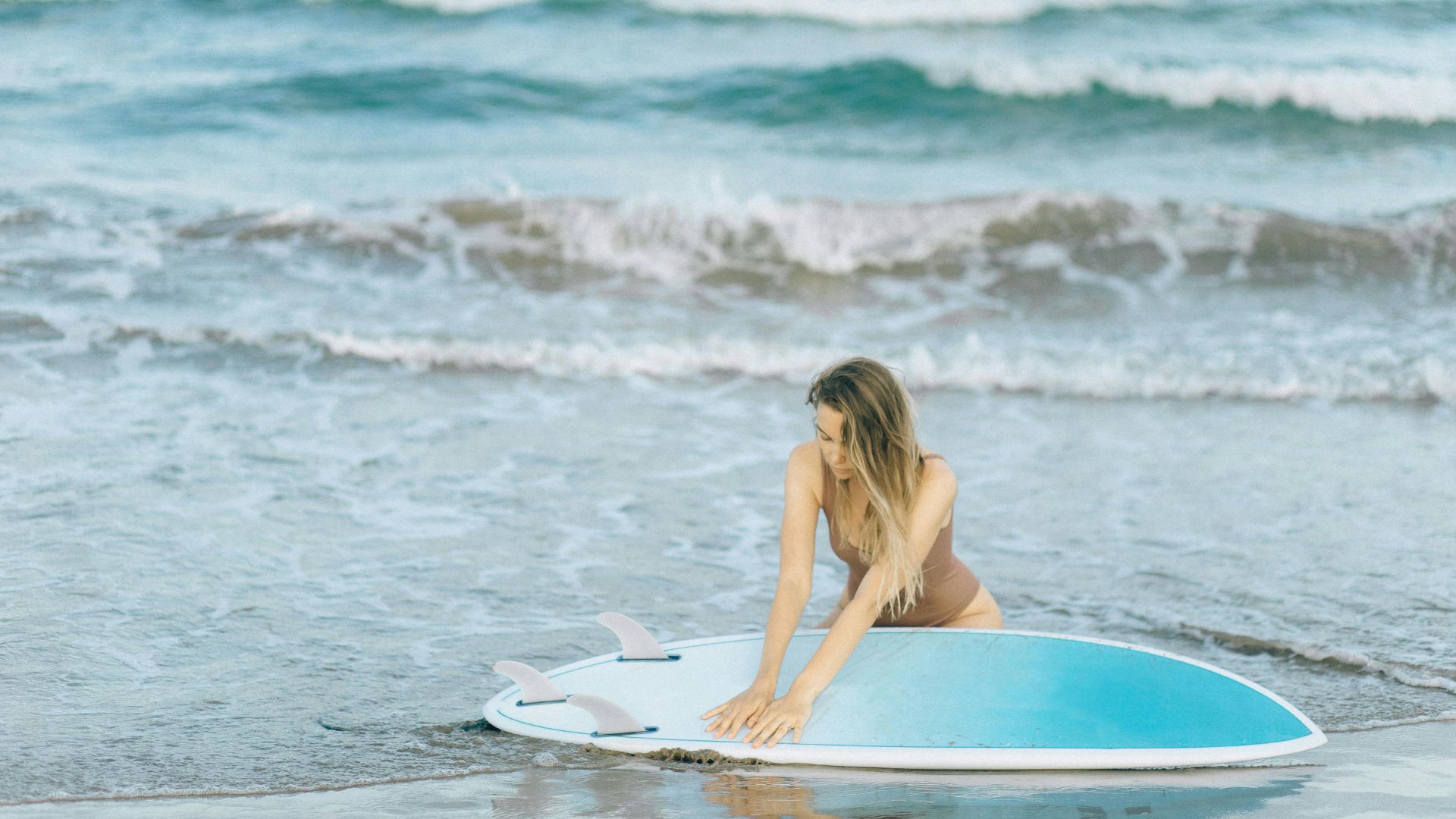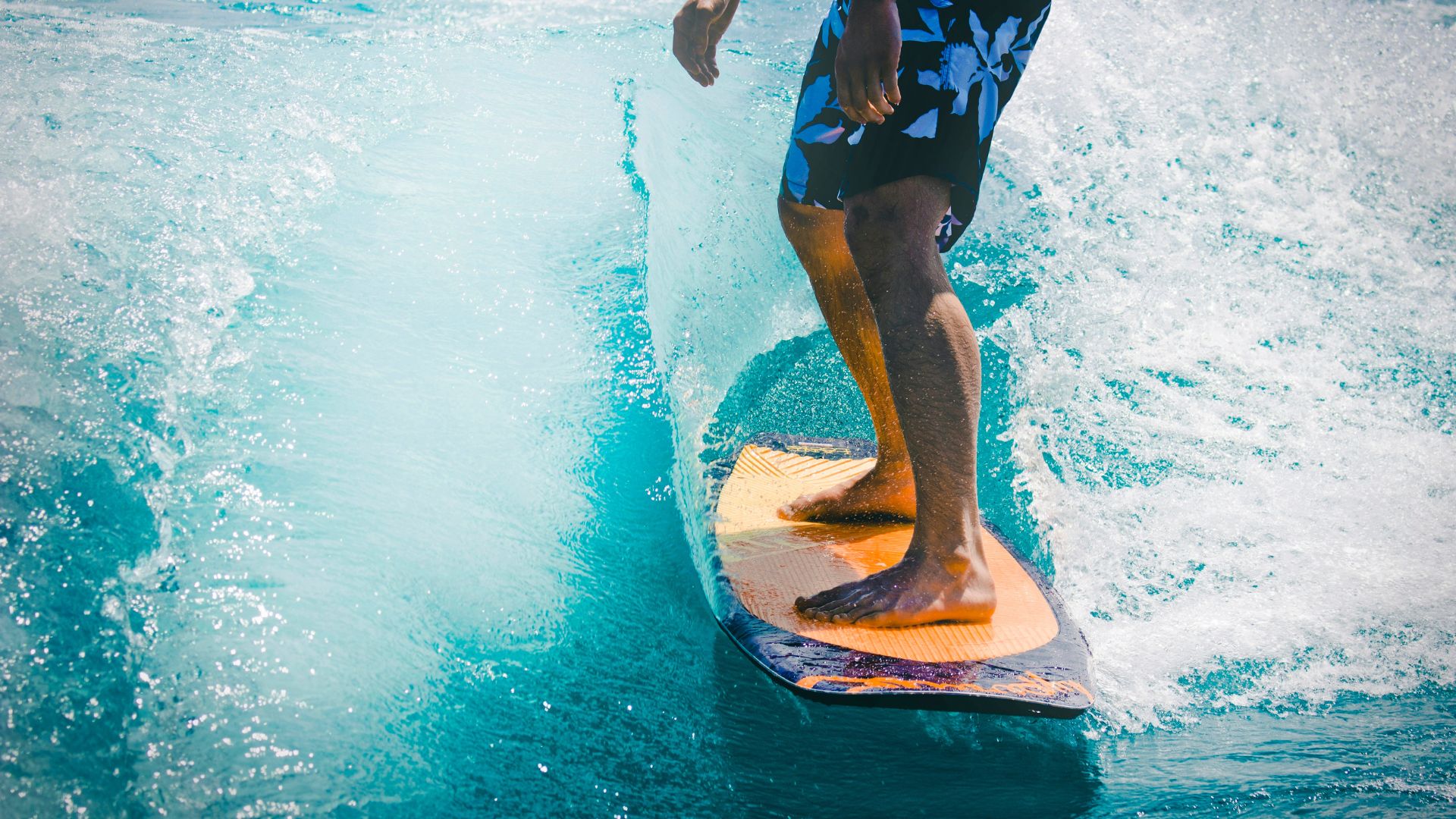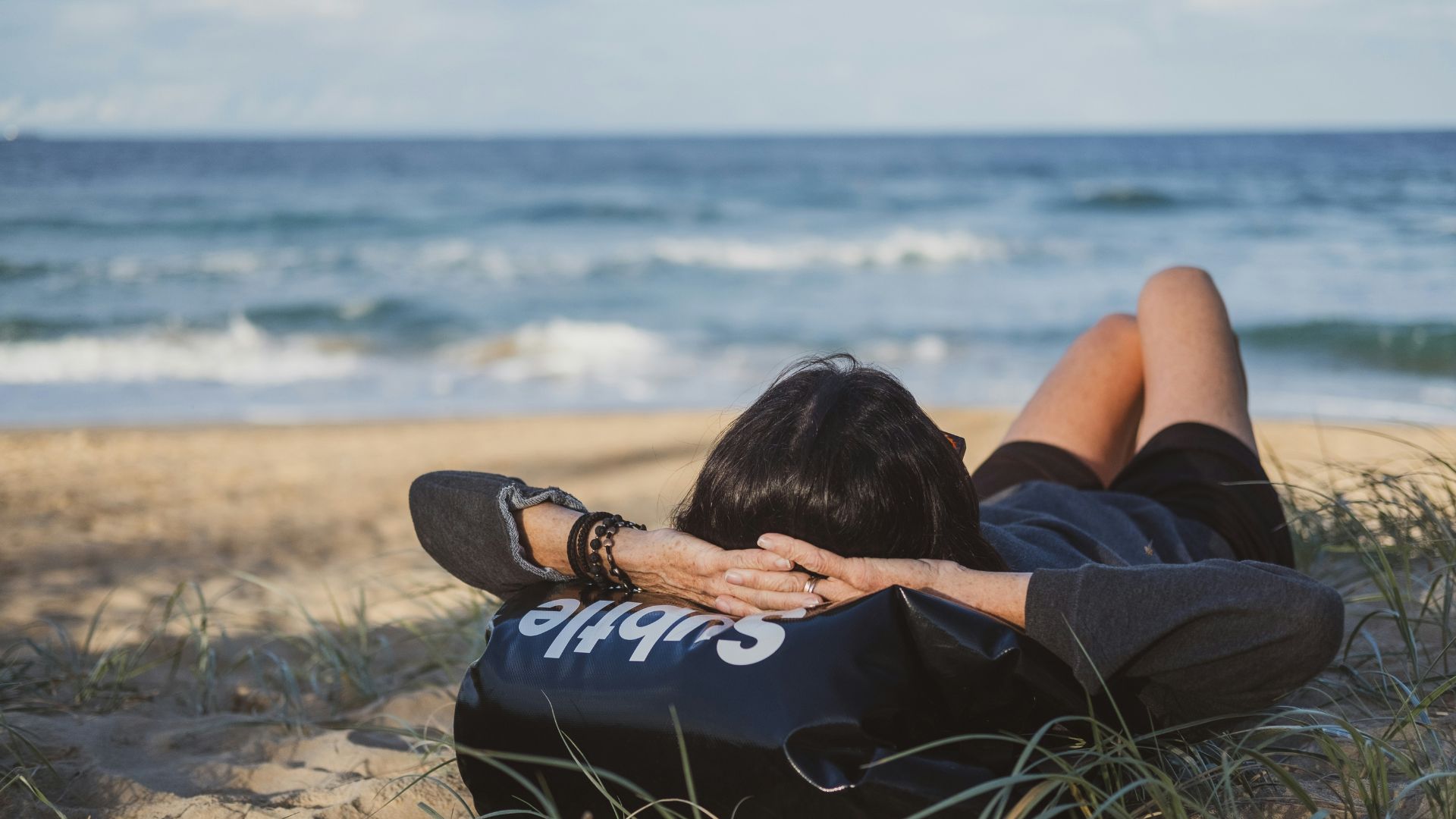Surfing challenges more than your balance and timing. It’s a full-body, high-skill activity that demands endurance, strength, flexibility, and composure, often all at once. Nowhere is this more obvious than in Indonesia, a country home to some of the most consistent and technically demanding waves in the world.
From the reef breaks of Uluwatu to the hollow barrels of Lakey Peak in Sumbawa, surfers in Indonesia encounter powerful waves and strong currents. And while the setting may be paradise, performance in these conditions requires more than just a good board and a brave heart.
This article explains how to develop the kind of fitness that supports better surfing, especially in places like Bali, Lombok, and beyond.
What Makes Surfing in Indonesia So Demanding?

Indonesia is often regarded as a surf destination that caters to a diverse range of surfers. Bali alone has dozens of breaks suitable for beginners, intermediates, and seasoned pros.
A Red Bull article states that Indonesian surfing started back in the 1970s. Passing Australian and American servicemen spotted the potential of waves and started surfing. There are several top-notch places where you can surf, including:
- Bali
- Sumatra
- Sumbawa
- Mentawai Islands
- Java
- Nias
- Lombok
According to Future Market Insights, the Indonesian surfing tourism industry is worth $9.2 billion in 2025. It is estimated to grow at a CAGR of 12% to reach a whopping $28.7 billion by 2035.
There are many beaches that are friendly for beginner surfers. However, even the so-called “beginner-friendly” spots like Batu Bolong in Canggu or Old Man’s can become overwhelming on bigger days.
Now imagine paddling out at Padang Padang, a reef break often referred to as the “Balinese Pipeline,” or Desert Point in Lombok. It is famous for its endlessly peeling left-hand barrels. These waves demand advanced positioning, strong duck-diving skills, and the kind of muscular endurance that lasts beyond just the first few sets.
Many visiting surfers quickly discover that the waves in Indonesia don’t give you time to recover. Paddle-outs are longer. Crowds are competitive. And reef cuts are real. Your fitness level directly affects your ability to stay safe, catch more waves, and enjoy the session instead of just surviving it.
Achieving Optimal Fitness Levels for Surfing
While there are many ways to achieve optimal fitness levels for surfing, you need a structured plan. Here are some tips to help you achieve optimal fitness levels:
#1: Establish a Surf-Specific Fitness Baseline
Before starting any surf fitness training, assess your current body condition. Surfing draws on multiple physical systems, including upper-body paddling endurance, fast-twitch pop-up power, hip and ankle mobility, and postural strength.
Start with three simple self-assessments:
- Paddle simulation test: Can you mimic paddling for 3 minutes straight (lying prone, paddling arms)? Shoulder fatigue or low back strain is a red flag.
- Pop-up test: Lie on your belly and time your pop-up. A pop-up slower than 1.5 seconds may be a sign of limited strength or mobility.
- Deep squat check: Can you drop into a surf stance squat, with knees bent and back upright? If not, ankle or hip mobility is likely restricting you.
These tests give a realistic snapshot of what needs work, not in a clinical sense, but in terms of practical surf performance.
You can rely on training modalities that allow you to practice surfing in controlled environments to improve your skills. As a Sage Journals article notes, competitive surfing has led to an increase in the use of various alternative training modalities. These are designed to increase exposure to surf-like activities when ocean conditions are not suitable.
#2: Improve Shoulder and Spine Mobility First

Your shoulders work overtime in surfing. Paddling out at Uluwatu or Nusa Dua during a solid swell is no joke.
You’re moving constantly against water resistance, with your arms repeating the same overhead motion for an hour or more. If your shoulders lack mobility or strength, pain and fatigue will follow quickly.
Improving shoulder mobility will increase your range of motion. According to an NCBI study, movement and simple exercises are crucial for enhancing mobility. The study found that including motion and exercises in people with shoulder pain led to improved functioning. Similarly, pain during movement was reduced, external rotation increased, and range of movement enhanced among patients.
At the same time, your thoracic spine (upper back) needs to stay extended while paddling. When this area is stiff, your lower back overcompensates, leading to soreness after even short sessions.
Action Plan:
- Spend 10–15 minutes per day on mobility work: shoulder openers, thoracic extensions over a foam roller, and dynamic arm swings.
- Use resistance bands to build strength in the rotator cuff (external rotations, scapular retractions).
- Stretch your pecs and lats regularly to prevent your paddling form from collapsing.
Consistent mobility work helps you paddle stronger and longer, especially at wave-heavy spots like Bingin, where getting stuck means an exhausting paddle back.
#3: Build Explosive Pop-Up Power with Bodyweight Training
A pop-up isn’t just about arm strength; it’s a full-body movement that blends coordination, power, and core control. Sloppy or slow pop-ups often result in wipeouts, missed sections, or a poor stance that you can’t recover from once you’re up.
In places like Keramas, where waves move fast and punchy, hesitation during your pop-up means you’ll miss the opportunity entirely.
According to the American Surf Magazine, burpees, push-ups, lunges, and squats are some exercises you can do to increase pop-up power. You should begin with controlled repetitions of push-up-to-plank-to-stand drills.
Over time, increase speed while maintaining good form. You can supplement the routine with:
- Burpee variations (minus the jump to avoid joint fatigue)
- Elevated push-up pop-ups (hands on yoga blocks, then pop up onto feet)
- Front-foot landing drills to improve stance accuracy
The goal is muscle memory, so that your body knows how to get up cleanly under pressure.
#4: Train Your Legs Like a Surfer, Not a Powerlifter

Lower-body strength is often misunderstood in surf fitness. It’s not just about squatting heavy weights. It’s about developing the ability to control, compress, and explode in unstable positions.
Take a look at surfers carving on the long faces of Desert Point or pulling into hollow pits at Padang Padang. They’re not “pushing” weight; they’re controlling and redirecting force from the wave through subtle foot pressure, hip rotation, and ankle flexion.
Aim to train legs 2–3 times per week using bodyweight or light resistance; more weight isn’t always better for surfers. This is especially true if you are facing health conditions related to positioning.
For instance, musculoskeletal injuries can cause pain due to poor posture when surfing. Similarly, there are certain conditions like stress urinary incontinence (SUI) where women surfers are more vulnerable. According to Healthline, individuals may urinate slightly due to body positioning during strenuous activities and exercise.
Many women try using medical devices like vaginal mesh implants to cope with SUI. However, such alternatives might lead to severe complications, as highlighted by the ongoing vaginal mesh lawsuit.
Plaintiffs are complaining about complications like mesh erosion, severe pain, infection, internal bleeding, etc. Therefore, it is best to train your legs and pelvic muscles in a way that can endure the challenges of surfing without opting for such implants.
#5: Develop Surf-Specific Cardiovascular Conditioning
Surfing often means long paddle-outs, fighting rips, and chasing multiple waves per session. At reef breaks like Impossibles or Outside Ekas, getting caught inside can turn into a 15-minute test of your aerobic system.
Standard jogging or cycling helps with base cardio, but doesn’t fully prepare you for surfing’s interval nature. You need both stamina and the ability to recover quickly between bursts.
According to a Red Bull article, some of the best exercises surfers can do to increase endurance are:
- Chin-ups
- Planks
- Push-ups
- Dumbbell drills
- Front squats
- Swimming
- Running exercises
With consistent training, you’ll last longer in the water and recover faster between sets, even on heavy days.
#6: Respect Recovery; It Builds Your Fitness Too

Rest is often the missing piece. In Bali or Mentawai boat trips, many surfers pack in 3-4 sessions per day. But without proper recovery, nutrition, hydration, stretching, and sleep, you’ll feel sluggish by Day 2.
Recovery isn’t passive. It’s what allows your body to adapt to training and stress. Regardless of the sports you participate in, recovery should be an integral part of your routine.
The importance of this can be seen in the demand for recovery footwear. According to Precedence Research, the global recovery footwear market was valued at $16.25 billion in 2024. It is expected to reach $28.94 billion by 2034 at a CAGR of 5.94%.
Make time for:
- Active recovery: light walking, swimming, or yoga
- Soft tissue work: foam rolling or massage
- Rehydration and replenishment (especially important after long sessions in the tropical sun)
Ignoring this step increases your risk of injury, especially overuse injuries in the shoulders and lower back.
Mental Preparation Is Just as Important
Surfing in Indonesia, especially in crowded or powerful lineups, isn’t only about fitness. It’s also about focus. The ability to stay calm, think clearly, and act quickly can’t be trained with weights. It comes from breath awareness, confidence in your preparation, and experience in difficult conditions.
Visualization, rehearsing movements and waves in your mind, is a powerful tool. So is journaling after sessions, reflecting on what worked and what didn’t. These practices help you grow from each surf, whether it was your best session or one where everything felt off.
When the stakes are high, your mind will default to how you’ve trained it. If you’ve prepared your body and your breath, the mind usually follows.
A surfer should try to achieve a zen mindset when riding a surfboard. Surfing in itself can be a way to prepare your mind. When you are in the ocean, the waves are constantly changing. Thus, you need to constantly re-analyze and re-adjust to adapt. This can clear your mind and offer you the benefits of meditation.
Building a Balanced Weekly Plan
Training for surf fitness doesn’t need to take over your life. In fact, overtraining is a real risk, especially if you’re surfing a lot already. The best plans respect your surf schedule and focus on smart recovery.
Here’s how a balanced week might look for someone surfing in Bali 3–4 times per week:
- Monday: Light mobility session + strength work (upper body focus)
- Tuesday: Surf session + breath training (10–15 minutes)
- Wednesday: Mobility + core control (planks, banded rotations)
- Thursday: Dryland interval training (20–30 mins)
- Friday: Surf session + post-surf yoga (30 mins)
- Saturday: Optional surf or skate day
- Sunday: Full rest or active recovery (walk, swim, or stretch)
Adapt based on wave conditions and energy levels. The key is consistency, not intensity.
Frequently Asked Questions
Should I train differently if I only surf beach breaks instead of reef breaks?
Yes, the type of wave you surf should influence your training approach. Beach breaks involve shorter rides and more frequent paddling through white water. Reef breaks, on the other hand, usually require more endurance for longer paddles, more calculated positioning, and stronger lower-body control.
How often should I train for surfing fitness if I want to see results?
For optimal results, aim for 3-5 dedicated training sessions per week. This can be a mix of strength training, cardio, flexibility work, and balance exercises. Consistency is key, even if you can only manage shorter sessions. Try to build a routine and stick to it for as long as possible.
What are some effective exercises for improving paddling endurance?
Exercises that mimic paddling movements are excellent. This includes swimming (especially freestyle and backstroke), resistance band paddling drills, prone rows, lat pulldowns, and even using a surf-specific paddle machine if available. Focus on high repetitions with good form and perform them consistently for a set period.
Surf fitness isn’t a side project. It’s part of your surfing identity, especially if you’re chasing waves in regions like Indonesia, where the ocean demands more from your body. Every pop-up, paddle, and turn depends on how you’ve prepared on land.
By focusing on functional strength, mobility, conditioning, and recovery, you give yourself the tools not just to surf longer, but to surf better. Whether you’re chasing barrels in the Mentawais or trimming across chest-high waves in Batu Karas, your fitness determines your freedom on the wave.


